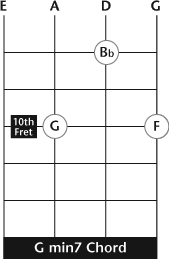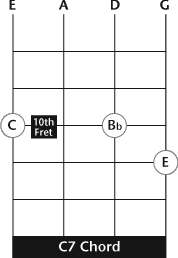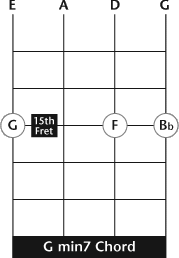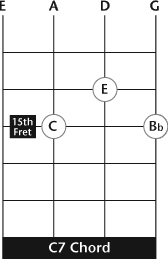| Online Bass Instruction with Rusty Springfield | ||
 |
||
|
Home | eMail | Articles | Audio Clips | Bass Gallery
Great Bass Tales | Photo Archive | Links | Lessons |
||
| II-Vs |
II-V's can also resolve to a minor chord. eg: D-7 G7 C-7. They may change keys, or lead to other II-V's. eg: D-7 G7 Db-7 Gb7 C-7 F7.
In many jazz tunes, you will often encounter a series of chords, called "turnarounds" which function to lead your ear back to the top of the tune. They may either stay in the original key of the tune, or temporarily leave the key. A "III/VI/II/V" progression is one of the most common turnarounds.
Some rock and funk tunes contain a "non-resolving" II-V progression, which forms the basis of the whole tune. (Evil Ways, Mr. Magic) eg: D-7 G7, D-7 G7, over and over and over... A II-V root motion can exist even when the actual chords are not minor 7ths moving to a dominant chord. Dominant chords frequently follow other dominant chords. Major 7ths can follow other major 7ths. This allows for harmonic variety, which is the mainstay of most jazz arrangements. Jazz musicians love to use chord substitutions to add their own personal "stamp" to a standard jazz tune, which may have been played over and over with the same worn out changes year after year. This helps keep the tune fresh and is part of jazz' appeal to musicians.
For even more harmonic variety, altered chord tones may be used. eg: D-7(b5) G7(b9) Notice that the flatted fifth of D-7 is the same note as the flatted ninth of G7: Ab.
Tip: To gain a more thorough working knowledge of jazz standards, I suggest you go out and buy a good fake book such as The New Real Book. It is loaded with II -V progressions.
Learn the melody and changes (chords) to as many standards as you can. It is also helpful
to obtain CD's featuring these tunes so you can hear what they sound like.
 |
 |
|
| A G7 to a C7 chord pattern is an example of a "two-five" pattern in the key of "F." These diagrams show two ways to play them on your bass. | ||
 |
 |
|
| Go to the next lesson: Chord Substitutions |